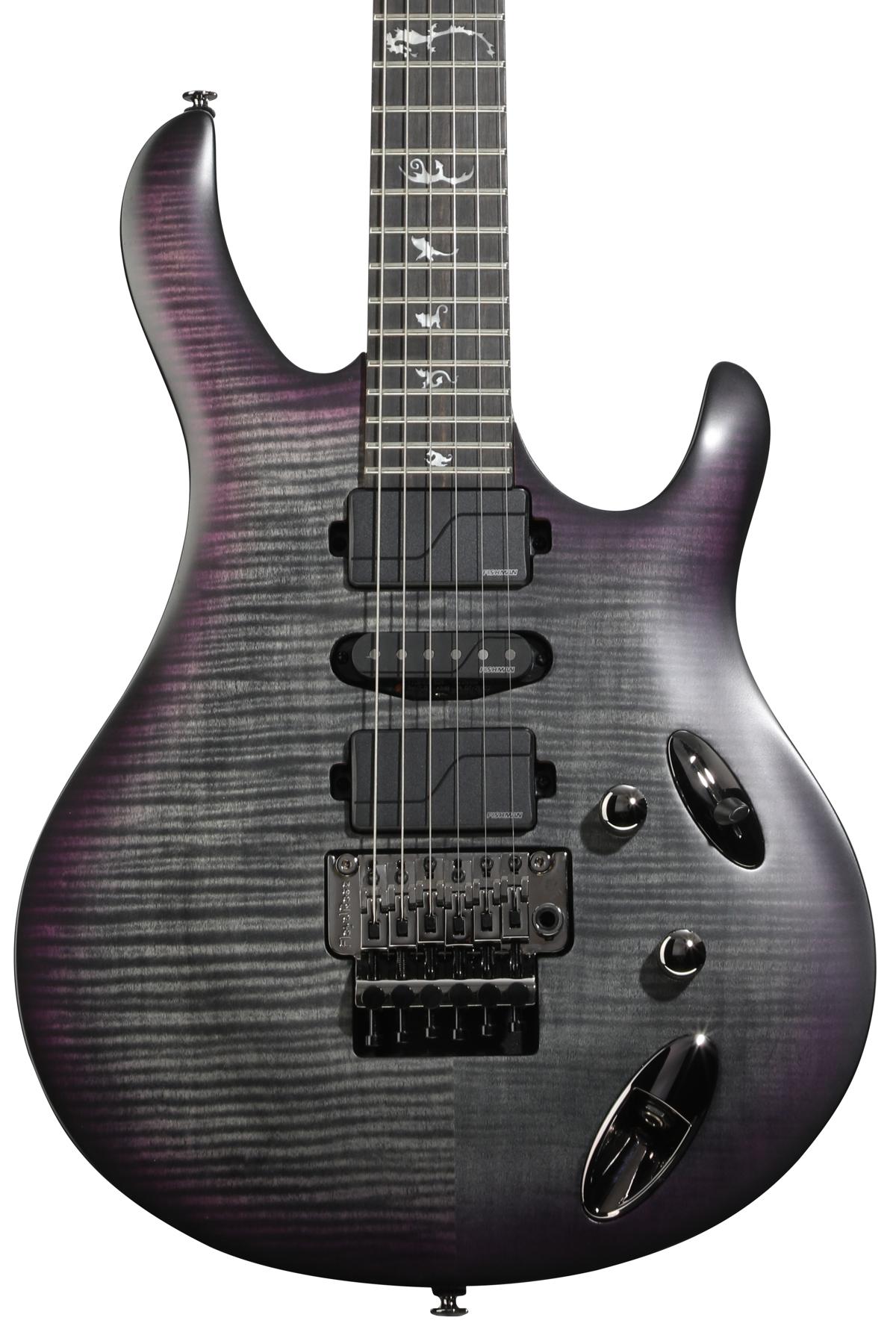Specs
Tubes: Four Ruby 6L6 power tubes, six Ruby 12AX7HG preamp tubes Output: 120 watts at 4, 8, or 16 Ω
Channels: Channel 1 (gain) and channel 2 (clean)
Controls: Master depth, presence, and volume controls, independent 3-band EQ and gain for each channel, channel 1-specific low-frequency gain, high-frequency gain, and footswitchable boost controls
Additional Features: Tube series/parallel FX loop with level control, speaker emulation DI, 2-button footswitch
Ratings
Pros: Powerful cleans with plenty of headroom. Enormously vicious overdrive with loads of gain and excellent note separation. Low tunings stay firm with heavy distortion.
Cons: Can be just a tad stiff for anything other than thrash.
Tones:
Ease of Use:
Build/Design:
Value:
Average Street Price: $1,699
randallamplifiers.com
Randall’s all-tube Thrasher amp head is the company’s new flagship—the result of a recently forged partnership with boutique amp guru Mike Fortin. The 6L6-based design packs 120 watts of heavy metal fury, and bears some family resemblance to Fortin’s own Natas amplifier. The Thrasher uses six 12AX7s to shape clean, rhythm, and lead tones on two separate channels. Each channel features its own dedicated gain, 3-band EQ, and volume controls. The lead channel features Fortin’s signature low- and high-frequency gain knobs, as well as a variable gain boost and a small switch that lets you move between three different overdrive voicings.
Mix in master depth, presence, and volume controls, balanced XLR and 1/4" line outs, footswitchable channel switching and boosting, and individual inputs for passive and active pickups, and you’ve got yourself a tool for unleashing sonic Armageddon.
The Thrasher’s overall feel and response is extremely tight and quick with a beefy, hard-hitting midrange that thickens chords and adds a nice rubbery bounce to the attack of picked notes. The clean channel yields big lows and smooth highs—particularly with humbuckers. In general, you won’t be able to relax the amp’s tight response enough to cop vintage Fender-like cleans nor unwind things quite enough for spongier-sounding Jerry Cantrell-style riffing. But for full-bore thrash metal mayhem, you’ll be hard-pressed to find an amp that can top the sheer brutality of the Thrasher’s overdrive channel.
Even at its highest gain settings, tones stay well defined and full, and the quick attack and massive headroom ensure that riffs played at warp speed don’t lose clarity and definition. And as I discovered after plugging in a Les Paul Baritone tuned down to G, it even handles extreme dropped tunings with ease, churning out ripping distortion with gut-wrenching lows. If you think you’ve heard the best that Randall has to offer, this channel is sure to make you think twice about that sentiment—especially if you’re a dyed-in-the-wool metal head.
Watch Ola Englund demo the amp:
See more Monsters of High Gain 2013 reviews and videos:
- Engl Fireball 100
- Blackstar Blackfire 200
- Randall Thrasher
- Diezel D-Moll
- Marshall JVM410HJS
- EVH 5150 III
- Orange TH100









![Rig Rundown: Russian Circles’ Mike Sullivan [2025]](https://www.premierguitar.com/media-library/youtube.jpg?id=62303631&width=1245&height=700&quality=70&coordinates=0%2C0%2C0%2C0)

















